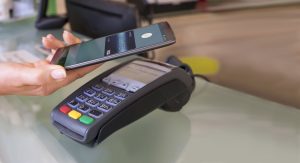In the United States, at least, mobile wallets and contactless transactions in general have been a hard sell, but now research results issued Wednesday indicate so-called frictionless payments may themselves hold less attraction for consumers than many had thought.
Apps that allow users to set up a payment method and then let transactions unfold in the background—a system familiar to users of ride-hailing apps like Lyft and Uber—raise big security and privacy concerns with consumers, according to a five-nation survey of more than 5,000 persons conducted in April by the acquirer Paysafe Group.

Fully half of consumers said fear of fraud was holding them back from using such apps, while 52% cited concerns about how their data might be used by other entities. These fears extend to other friction-free scenarios. Voice-activated technology, such as Amazon.com Inc.’s Alexa and Alphabet Inc.’s Google Home, are “not secure enough for shopping,” according to 65% of respondents, who were surveyed in Canada, the United Kingdom, Germany, and Austria, as well as in the United States.
Nor do experimental efforts such as the Amazon Go store concept allay these fears. The store registers shoppers as they enter, tracks them as they pick up products, and charges their stored credentials as they leave. Just 11% said they’d “definitely shop this way” if a local store offered it. The rest expressed concerns about security and privacy, said they don’t know enough about it, or said they “can’t see the point.” That last sentiment alone claimed an 18% response.
To be sure, such reactions may change over time as payments-in-the-background become more widely available. But even more familiar methods such as mobile wallets and contactless cards attracted at best mixed results, according to Paysafe’s report, entitled “Lost in Transaction.”
Last year, in a similar survey, fully 40% of Americans said they had at least tried contactless payment. But in this year’s canvass, just 3% indicated they had used the method in the previous month. By contrast, 54% had done so in the United Kingdom, where contactless has won widespread popularity. In the United States, the initial burst of enthusiasm in 2017 “has clearly not translated into habitual usage,” notes the report. While many U.S. stores have installed EMV terminals, not all have yet activated the contactless capability, based on near-field communication technology, usually built into these devices.
Similarly, mobile-wallet usage lags significantly. Only 9% of respondents said they use the wallets while shopping at physical stores. A top barrier is fear of theft of the user’s smart phone or watch, a factor cited by 30%, virtually unchanged from the 2017 results. Some 28% confessed they were unaware of where they can use a mobile wallet, while 26% said using a contactless debit card was no less convenient.
Still, owners of these technologies are much more enthusiastic about using them to make payments. Some 44% of smart-phone owners have used their device to pay, while 48% of smart-watch users said the same thing.
Those results may bode well for future results. As the report notes, “[O]nce people are exposed to the benefits of the technology, adoption rates and attitudes improve extremely quickly.”





